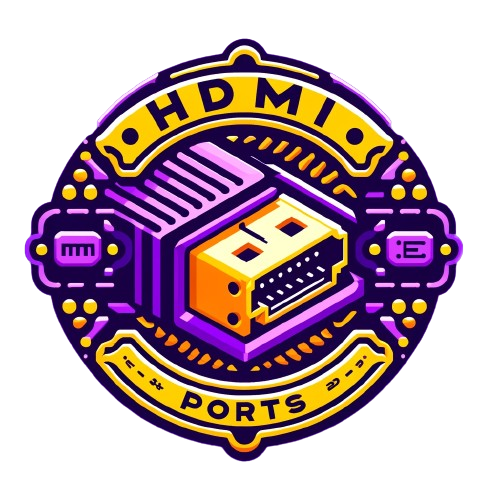Introduction
The iPhone 15 series offers a range of impressive features and capabilities. One of the key advantages of this new series is the availability of expandable memory options. With the ability to add a memory card, users can greatly increase the storage capacity of their iPhones, allowing them to store more photos, videos, and apps without worrying about running out of space.
In addition to expandable memory, the iPhone 15 series also supports the use of Solid State Drives (SSDs). SSDs offer several benefits over traditional hard drives, including faster read and write speeds, improved durability, and lower power consumption. By using an SSD with their iPhone, users can experience faster app loading times, smoother multitasking, and overall improved performance.
Another exciting feature of the iPhone 15 series is the introduction of HDMI connectivity. With an HDMI cable, users can connect their iPhones to a variety of external displays, such as TVs or monitors. This opens up a whole new world of possibilities, allowing users to enjoy their favorite content on a larger screen, share presentations or slideshows, and even play mobile games with a more immersive experience.
Expandable Memory Options
The iPhone 15 series offers users the option to expand their device’s memory by adding a memory card. This provides a convenient way to increase the storage capacity of the iPhone, allowing users to store more photos, videos, and apps without worrying about running out of space.
Additionally, users can take advantage of Solid State Drives (SSDs) with the iPhone 15 series. SSDs offer several advantages over traditional hard drives, including faster read and write speeds, improved durability, and lower power consumption. By using an SSD with their iPhone, users can experience faster app loading times, smoother multitasking, and overall improved performance.
Detecting and connecting a memory card with the iPhone is a straightforward process. Users can easily detect the memory card by inserting it into the designated slot on their device. Once inserted, the iPhone will automatically detect the memory card and make it accessible for use. From there, users can manage their files and media directly from their iPhone.
When it comes to compatibility with SSDs, the iPhone 15 series ensures a seamless experience. Users can connect an SSD to their iPhone by using an HDMI cable. Simply connect one end of the HDMI cable to the iPhone and the other end to the SSD. The iPhone will detect the SSD and make it available for use. This allows users to access and manage their files stored on the SSD directly from their iPhone.
It’s important to note that not all SSDs are compatible with the iPhone 15 series. Users should ensure that they select an SSD that is specifically designed for use with the iPhone. This will ensure optimal performance and compatibility. Additionally, users should follow the manufacturer’s instructions when connecting and disconnecting the SSD to avoid any potential issues.
In conclusion, the expandable memory options available with the iPhone 15 series provide users with the flexibility to increase their device’s storage capacity. Whether it’s through the use of a memory card or an SSD, users can easily add more storage space to their iPhones. This allows for a more seamless and enjoyable user experience, with the ability to store and access more files, photos, and videos.
HDMI Connectivity
HDMI connectivity is one of the exciting features of the iPhone 15 series. With an HDMI cable, users can connect their iPhones to external displays like TVs or monitors. This offers a range of benefits and opens up new possibilities for users.
Benefits of HDMI Connectivity
- Enjoy content on a larger screen: With HDMI connectivity, users can enjoy their favorite photos, videos, and apps on a bigger display, providing a more immersive viewing experience.
- Share presentations and slideshows: HDMI connectivity allows users to easily share presentations, slideshows, or other visual content from their iPhones onto a larger screen, making it ideal for meetings or gatherings.
- Enhanced gaming experience: Gamers can take advantage of HDMI connectivity to play mobile games on a bigger screen, providing a more immersive and enjoyable gaming experience.
Exploration of HDMI Connectivity Options with the iPhone 15 Series
The iPhone 15 series offers seamless compatibility with HDMI connectivity. Users can connect their iPhones to external displays by using an HDMI cable. This enables them to utilize the full potential of their iPhones and enjoy content on a larger screen.
How to Detect and Connect an HDMI Cable
Detecting and connecting an HDMI cable with the iPhone 15 series is a simple process. Users just need to follow these steps:
- Plug one end of the HDMI cable into the HDMI port on the iPhone.
- Plug the other end of the HDMI cable into the HDMI port of the external display.
- Once connected, the iPhone will automatically detect the HDMI cable and establish the connection.
Using HDMI for High-Speed Data Transfer
In addition to its use for displaying content on external screens, HDMI can also be utilized for high-speed data transfer. Users can transfer files, photos, videos, and other media between their iPhones and external devices quickly and efficiently using an HDMI cable.
Using the iPhone without Wi-Fi
While Wi-Fi is the most common way to connect to the internet with an iPhone, it is not the only option available. Users can also utilize a LAN (Local Area Network) connection to access the internet without Wi-Fi. This section will explore the benefits of using a LAN connection, how to connect the iPhone to a LAN without Wi-Fi, and how LAN connectivity can unlock faster internet speeds.
Overview of using the iPhone with a LAN connection
A LAN connection allows users to connect their iPhone to a wired network, such as an Ethernet connection. This can be particularly useful in situations where Wi-Fi is unavailable or unreliable, such as in certain office or industrial settings.
Exploration of the benefits of a LAN connection
Using a LAN connection offers several benefits over Wi-Fi. Firstly, LAN connections tend to be more stable and reliable, as they are not susceptible to interference from other wireless devices or obstacles like walls. Additionally, LAN connections often provide faster and more consistent internet speeds, which can be advantageous for activities that require a high amount of bandwidth, such as streaming videos or online gaming.
How to connect the iPhone to a LAN without Wi-Fi
To connect the iPhone to a LAN without Wi-Fi, users will need an Ethernet adapter that is compatible with their iPhone model. Once the adapter is connected to the iPhone’s charging port, users can connect an Ethernet cable from the adapter to the LAN port of their router or modem. The iPhone will automatically detect the LAN connection, and users can then access the internet through their Ethernet connection.
Unlocking faster internet speeds with LAN connectivity
LAN connectivity can provide faster internet speeds compared to Wi-Fi connections. This is due to the direct wired connection between the iPhone and the router or modem. By utilizing a LAN connection, users can experience smoother and faster internet browsing, streaming, and downloading on their iPhones.
Troubleshooting and FAQs
Common issues with detecting HDMI cables and memory cards
Some common issues that users may encounter when detecting HDMI cables and memory cards with the iPhone 15 series include:
- HDMI cable not being recognized by the iPhone
- Memory card not being detected by the iPhone
- Compatibility issues between the HDMI cable or memory card and the iPhone
Steps to resolve detection issues
If you are experiencing issues with detecting HDMI cables or memory cards, here are some steps you can take to resolve them:
- Make sure the HDMI cable is securely connected to both the iPhone and the external display.
- Check that the memory card is properly inserted into the designated slot on the iPhone.
- Restart your iPhone to refresh the system and try detecting the HDMI cable or memory card again.
- Ensure that you are using an HDMI cable and memory card that are compatible with the iPhone 15 series.
- If the issue persists, try using a different HDMI cable or memory card to see if the problem lies with the original hardware.
Compatibility requirements for memory cards and SSDs
When using memory cards and SSDs with the iPhone 15 series, it is important to ensure compatibility:
- For memory cards, make sure to use an SDHC or SDXC card that is compatible with the iPhone.
- When using an SSD, select one that is specifically designed for use with iPhones to ensure optimal performance and compatibility.
- Follow the manufacturer’s instructions for connecting and disconnecting the SSD to avoid any potential issues.
Frequently asked questions
Here are some frequently asked questions regarding HDMI cables and memory cards with the iPhone 15 series:
- Can I use any HDMI cable with the iPhone 15 series?
- What types of memory cards are compatible with the iPhone 15 series?
- Do I need to format a new memory card before using it with my iPhone?
- Can I use an SSD with any iPhone 15 model?
- Are there any limitations on the storage capacity of memory cards and SSDs for the iPhone 15 series?

